Research on tales and lifes floating between the hydrosphere and atmosphere – medusa, seaweed, salt, noise pollution, corals … ––––––––– Nina M. W. Queissner and Linda Weiß narrate through "Looking for Medusa" the myth of Medusa. They invite us to explore, in various bodily stances – standing, sitting, lying – the textures and sounds that inhabit the space. This exploration aims to forge connections between the vibrant life of a coral reef and the depth of human experience. On the Transformer, an array of collected images, texts, and objects offers a glimpse into the intricate process of artistic research.
Don't wanna be here? Send us removal request.
Text
https://extractingtheocean.org/
Neues Projekt von Elspeth Probyn
0 notes
Text
Medusa to be continued …

ZÄRTLICH GEHT DIE WELT ZUGRUNDE: STILL LOOKING FOR MEDUSA – by NINA M. W. QUEIßNER & LINDA WEIß radia season 52 – show #1008 (radio x) – playing from July 22 to July 28, 2024
ZÄRTLICH GEHT DIE WELT ZUGRUNDE: STILL LOOKING FOR MEDUSA is a tribute to corals, the sensitive critters of Gaia’s underwater realms, showcasing their profound ability to forge symbiotic relationships. Corals, as holobionts for zooxanthellae, epitomize interdependence; as reefs, they offer shelter to many marine creatures; as strong formations, they modulate the ocean’s ebb and flow into gentler currents. As the ancient ancestors of Medusa, they hold the spirit of nature’s often misunderstood and transformative powers. Medusa herself, a female figure of Greek mythology, represents the recurring theme of metamorphosis and the complex dynamics of power and seduction, banished to safeguard the male gaze.
Through a rich saturation of marine bioacoustics, noise pollution, mythic tones, Nina M. W. Queißner and Linda Weiß beckon you to immerse yourself in the deep, dark blue soundscape. Here, lose your way, welcome the feeling of otherness, and give yourself to the waves of yearning, and acknowledge cold shivers. Picture Medusa, whose symbiosis sustains the life that thrives beneath the waves.
underwater sound recordings: Coral reefs (Red Sea, Egypt), shipping traffic on the Main River and the English Channel of the Alabaster Coast; additional sound recordings: Baking soda in water, hot oil, ice cubes, crystal glass and water, tadpoles, rain on polyamide, etc., synthesizer, melodica, Sansa.
image: detail tentacular beings under salinity stress, space sound installation Looking for Medusa, Senckenberg Naturmuseum, Frankfurt a. M. (DE), 2023, photo by Linda Weiß.
concept/production: Nina M. W. Queissner
1 note
·
View note
Text
Das Getreide aus dem Meer mit viel Potenzial als Nahrungsmittel
Juan Martín erzählt, dass das indigene Volk der Seris bzw. Comcaac den April „Mond, in dem die Saat des Meeresweizens reift“ nannten. Zu dieser Zeit werde das vom Meeresgrund gelöste Seegras von der Brandung an die Küste der Meerenge Infiernillo zwischen dem Golf von Kalifornien und der Insel Tiburón angespült, erläutert der Biologe. Die Sandmenschen, die hier ‒ zwischen der Golfküste und den östlichen Ausläufern der Sonora-Wüste ‒ leben, trocknen das Seegras und schütteln das Korn heraus.
Schon im 16. Jahrhundert betonte der Entdecker Álvar Núñez Cabeza de Vaca in seinen Aufzeichnungen, welch große Bedeutung das Mehl aus den Samen dieser Wasserpflanze für die Ernährung der Ureinwohner hatte, die daraus Kuchen und Heißgetränke (sog. Atoles) herstellten. Ein modernerer Beleg für den Nutzen von Zostera marina für den indigenen Stamm der Seris findet sich in einer Ausgabe der Zeitschrift Science (vom 27. Juli 1973). Ein Exemplar davon sollte viele Jahre später Ángel León in die Hände fallen ‒ und so entstand seine Idee, Seegras als gesundes Lebensmittel zu nutzen.
0 notes
Text
REMEMBER THEIR NAMES: THE WOMEN WHO ALMOST SAVED TROY
by Christine Lehnen
… In the oral tradition of those countries that now cover the territory of Ancient Greek Scythia, stories of women warriors are widespread and told with relish. In those stories, women often face men in combat – and it is just as often that the woman comes out on top, not the man. From the Lady Amezan, who accidentally kills the man she loves in battle and then stabs herself, through the warrior queen Nushaba, who meets Alexander the Great, to Queen Semiramis, who according to Herodotus ruled all of Asia and may or may not have constructed the Hanging Gardens of Babylon – stories of heroines abound, both historical and mythical, preserved to this day in the storytelling traditions that stretch from Georgia over the Caucasus to China, leaving their traces even in Ancient Greek poems such as the Iliad.
What and whom we remember matters. The stories we tell each other of our past define who we think we are today, and what we believe we can be in the future. They are what makes up our cultural memory, and our cultural memory in turn defines our collective identity, as the theorists and historians Jan and Aleida Assmann have shown.
Simone de Beauvoir, one of the founders of modern feminism, wrote in The Second Sex that women have no history of their own. Brilliant as she was, she may have been wrong in this one regard. Women do have a history, a past to call their own: we do have heroines, in myth, in legend, in history. All we need to do is remember them. …
0 notes
Text

Love it!!!
Juergen Teller
Bjork, Spaghetti Nero, Venice, 2007
C-print, edition of 5 40.6 x 50.8 cm 16 x 20 inches 45.1 x 55.6 cm (incl frame) 17 3/4 x 21 7/8 inches (incl frame) Courtesy the artist and Lehmann Maupin, New York, Hong Kong, and Seoul.
2 notes
·
View notes
Text


Looking for Medusa // Stress Test: Crystal Growth – Changing Waters, part One Saline Solution
1 note
·
View note
Text

Laura Tripaldi, Paralell Minds, Discovering the Intelligence of Materials, Urbanomic Media Ltd. 2022.
0 notes
Text
Emilija Škarnulytė – The Goddess Helix
Da will ich hin :)))
The Goddess Helix weaves together a multi-year cycle of ongoing artwork by Emilija Škarnulytė to create the first comprehensive survey of this series. Comprising film, sculpture, and holographic imagery, the exhibition highlights three interlaced cinematic installations drawing on the research of Marija Gimbutas (1921-1994), a Lithuanian anthropologist who interpreted the prominence of goddess and serpent motifs in Neolithic art. Within this film series, Škarnulytė embodies a mythic guise��part-human, part-aquatic animal—guiding spectators through the currents of contemporary existence. Two pivotal artworks bookend this series: The Code (2024), a newly commissioned twinned-animation portraying pythons metamorphosing from sigils into a genetic sequence, and Aldona (2013), a poignant homage to the artist's grandmother, who is a foundational pillar of Škarnulytė’s own journey. Exploring themes of adaptation, survival, and myth, these collected stories seek to inspire new means of navigating environmental and social crises amidst growing disillusionment.
Oracles, though elusive, serve as guides throughout the exhibition, offering as many meandering paths as they do answers. The paradoxes they raise seem imaginary, but as the poet Muriel Rukeyzer noted: "the universe is made of stories, not atoms". Politics and science also rest on riddles, and their own lore directly conditions the lived lives of individuals. In turn, Škarnulytė's fabled narratives shadow and reconceive the authority of such "atoms", and calls for us to rediscover ourselves in how we care for, perceive, and exist within the planet, its ecosystems, and the cosmos. The narrative device of her folkloric creatures and guides adeptly performs as a vector, delicately peeling back the myths surrounding the stories we create and rely on to navigate life.
Emilija Škarnulytė (b. 1987), a Lithuanian-born artist and filmmaker, works at the intersection of documentary and speculative fiction. Her video works lead viewers through decommissioned nuclear power plants, forgotten underwater cities, and uncanny natural phenomena. Within these eerie sites, where humanity intersects with the non-human, Škarnulytė delves into the myths and remnants of modernity.
0 notes
Text
Hier lässt sich der Essay Waldspüren, Yvonne Volkart, herunterladen. Ein schöner Impuls zu Kunst und Naturwahrnehmung. Potentiale, Perspektiven auf das Arbeiten mit Sensortechnik. Zitat hierzu aus dem Text: "Darüber hinaus mache ich auch die Erfahrung, dass es Existenzweisen gibt, von denen ich keine Ahnung habe, und die dennoch mit mir verbunden sind: Sie lockern vielleicht den Boden für meinen Salat oder werden getötet, wenn ein Radweg durch den Wald asphaltiert wird. Die Erfahrung, dass wir mit anderen verbunden sind, auch wenn wir keine direkte Beziehung zueinander haben, ist eines der Geschenke, die mir solche künstlerischen Strategien des Waldspürens machen können. Und gleichzeitig lässt das Ungewohnte der fremdartigen, ja fast schon elektronisch anmutenden (Natur)Klänge die Dinge in ihrer Andersartigkeit stehen."
0 notes
Text
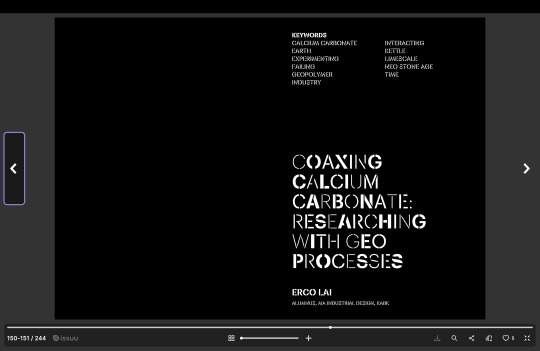

Essay Snippet aus dem Heft "Touching as a Research Method". This publication by the KABK Lectorate Design features projects by KABK tutors and students in which touching plays a pivotal role.
Komplette Ausgabe: https://issuu.com/kabk/docs/kabk_design-lectorate_touching-publication Spannend // Neues zum Konzept Stresstest: Es geht um Calcium-Verbindungen und Kristallisation und um das Wiederaufbauen von Korallenriffen. Das sind wir wieder ;) Koralle — Calcium-Carbonat — Seegras = Medusa Welche Bedeutung hat die Zu- und Abnahme des Calcium-Carbonats in Riffen? Was bedeuten andere Meeresströmungen für den Stoffaustausch? Welche Wirkungen haben Stoffe, die in und auf den Korallen kristallisieren können? Hier ist wieder die Brücke zum Seegras, das auch einen hohen Anteil an Kristallstrukturen beherbergt. Jedes Wässrige ist druchdrungen (#Saturation) von Salzen? Calcium-Carbonat ist ein Carbonat-Salz der Kohlensäure. Welches Salz ist auf/in dem Seegras (konnte ich nicht rausfinden)? Schlägt diese salzige, im Trocknen je nach Menge sichtbare Verbindungen die Brücke zwischen Koralle und Seegras auf biochemischer Ebene? Die Partikel, die alle Körper durchdringen, tief im Körpergedächtnis, sich einnisten, hegen und pflegen, bemuttern. Tränen sind salzig. Kein Clacium, aber Salzkrusten können sie hinterlassen. Ist Medusas Körper diese Salzverbindung? Ein Wissen, dass überlebensnotwendig ist? Zwischen Körpern mäandert? Eindringt, weiß, und stärkt? Steckt uns Medusa (heute noch) in den Knochen? (Calciumverbindung aus Korallen werden zu Nahrungsergänzungsmitteln für Menschen verarbeitet. Absurd).

0 notes
Text
wtf!?!?!?! Mit Hélène Cixous’ Schlüsseltext Das Lachen der Medusa (1975) ist es einsichtig geworden, wie sehr ein hier geäußertes widerständiges, bewegtes und herausforderndes Bekenntnis zum politischen Akt des Schreibens im Ausgang des weiblichen Begehrens steht. Dabei rückt die Konstellation und das Konzept ›Medusa‹ insbesondere in den Mittelpunkt einer »Wandelbarkeit« sowie eines »Übersetzungsprozesses« der Schrift respektive der Schriftlichkeit als Ausdruck einer geradezu unmöglichen écriture féminine: »Unmöglich eine weibliche Art des Schreibens zu definieren, das ist von einer Unmöglichkeit, die weiterbestehen wird, denn man wird diese Schreibart nie theoretisieren, umgrenzen, kodieren können […]. Aber sie wird immer über den, vom phallozentrischen System bestimmten Diskurs hinausführen.«
0 notes
Text
There is no escaping underwater noise
S.B. Blackwell
My colleague and I are walking back to our office. A fire truck drives by with its siren at full volume. It only takes a few seconds to pass, but the sound is jarring and we cover our ears with our hands. A minute later, as we walk along the grounds of an office complex, we pass a gardener using a leaf blower. Wearing earmuffs and intent on his task, he is completely oblivious to his surroundings. Once again, our conversation stops, we give him a wide berth, and hurry through the entrance of our building. Acoustically, we have just entered a refuge.
The Industrial Revolution and the invention of the internal combustion engine gave humankind the tools to become the planet’s noisiest creature. With time, we also became aware of the negative effects of high levels of noise: hearing loss, increased stress levels, a depressed immune system, and insomnia, to name a few.1 Accordingly, many countries have rules that limit sound exposure in residential areas or human work environments and suggest mitigation when necessary (e.g., wearing earplugs in certain work settings). Unfortunately for marine mammals, humans don’t live with their ears underwater, and for a long time we were as oblivious to the anthropogenic underwater racket we produced as the leaf-blowing gardener was to my colleague and me. For example, studies conducted over spans of decades in the Pacific Ocean basin have shown that background sound levels (specifically at low frequencies, below 100 Hz) have increased by 2.5 to 5 decibels per decade since the 1950s, when early underwater recordings were made by the US Navy.2–4 The huge expansion of global marine shipping, as well as other ship-based sound-producing activities, largely explain these increases in sound levels. Note that because decibels are measured on a logarithmic scale, a doubling of sound power (e.g., two vessels instead of one) results in a 3-dB increase in levels, and a tenfold increase in sound power results in a 10-dB increase.
The sounds humans generate underwater are often a biproduct of other activities, such as shipping and construction. This is not the case, however, in oil and gas prospecting: here, sound is generated on purpose and used to search for hydrocarbon-bearing strata under the seafloor. Seismic airguns, used for this purpose, send high-amplitude sound pulses through the water and into the seafloor, and the returning echoes are analyzed for the presence and location of hydrocarbons.
…
0 notes
Text
0 notes
Text
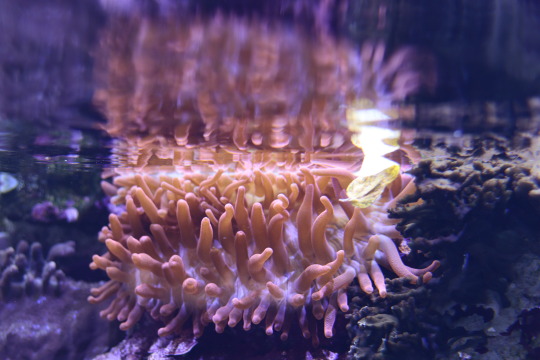
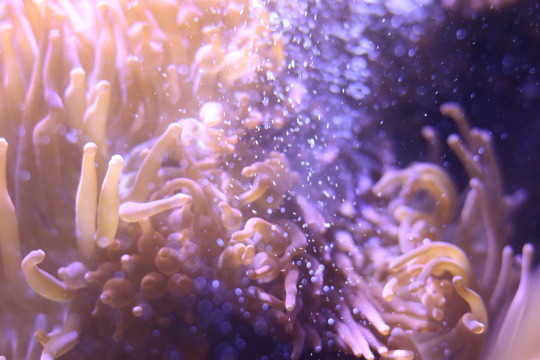
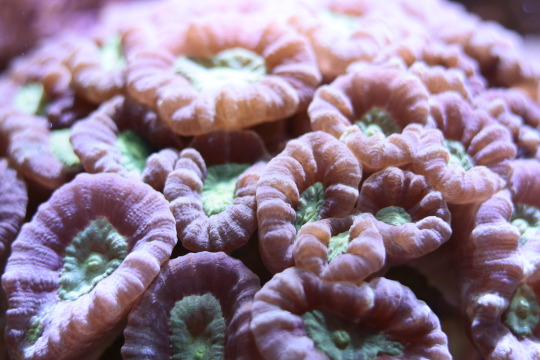
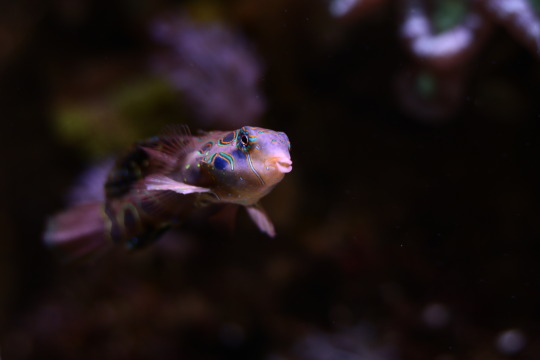
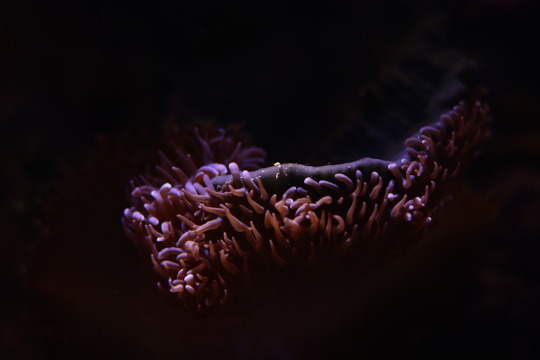
Liebe Nina, ich war in der Wihlema und habe ein paar kleine Korallengemeinschaften entdeckt. <3 Linda
1 note
·
View note
Text
0 notes
